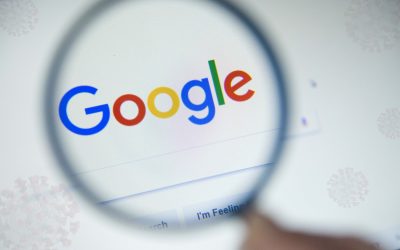It is an interesting time to be a social media marketer. What started as a fruitful and promising year at the outset of January turned sour by March, likely permanently.
However, despite the advent of COVID-19, advertising revenue on social media in Q1 continued to trend upwards Y-O-Y. This is most likely due to the late-quarter onset of the pandemic, the effects of which will be more seen in Q2 earnings results. Below, we dive into the Q1 2020 earnings of Facebook, LinkedIn, and Twitter, with a focus on the coming attractions for advertisers on the platforms, and what marketers can take from platform developments in the age of COVID-19 crisis.
Q1 2020 EARNINGS: A LOOK AT THE KEY NUMBERS
All the major social players continued to present revenue growth in Q1 2020 when compared to Q1 2019, despite late-quarter factors. It is yet to be determined how this will change for Q2 2020 earnings.
FACEBOOK:
Q1 total ad revenue from the Facebook family totaled $17.7 billion, an increase of 18% or 19% on a constant currency basis. This increase in ad revenue coincided with an increase by 11% in daily active users to 1.73 billion. Monthly active users increased by 10% year over year.
TWITTER:
Twitter’s ad revenue growth was considerably smaller, showing only a 3% increase since 2019. However, the users growth on the platform was substantial—monetizable daily active users increased by 24%.
LINKEDIN:
LinkedIn revenue increased by 21% on a constant currency basis. LinkedIn now also boasts a record of 690 million professionals on the platform.
POTENTIAL IMPACT:
Over the years, the user-strength of social media has continued to grow each year, presenting more opportunities for savvy brands and businesses to reach and engage their target audiences.
However, with COVID-19 impacting consumer spending in adverse ways, marketers will likely need to pivot their strategies in the interim, turning traditionally acquisition- and direct- response-focused initiatives into retention and engagement plays.
Focusing on sound content strategies that demonstrate added value even beyond the end transaction should prove fruitful in keeping your brand top of mind when an economical correction takes place.
SURGE IN TIME SPENT & ENGAGEMENT
Social media usage between 2019 and 2020 is displaying a near 10% increase in time spent. Naturally, with the increase in downtime provided by COVID-19 and stay-at-home orders, users are showing an increased propensity to spend time on their social networks of choice.
Users are leveraging social media to stay abreast of information, keep virtually connected with family and friends, and fill the laytime by spending more hours immersed in content consumption.
FACEBOOK:
Looking at the Facebook suite of apps, some regions are recording as much as a 70% increase in time spent. The increased engagement is manifesting first in communication formats, with WhatsApp and Messenger seeing a 2x increase in voice and video calls, and the message volume increasing 50%. Live video is also seeing a significant surge in users, growing more important particularly during the initial few weeks of COVID-19. According to Facebook, more than 800 million users are tuning in to live workouts, concerts, and other events on the platform on a daily basis.
TWITTER:
Twitter presents a similar story. Twitter’s chief focus for advertisers has been making campaign construction as simple as possible and presenting clear cut areas to which to attribute a campaign’s success or failure. The platform’s timely work on ad format resonance and messaging relevance is paying off, reporting ad engagements in the form of click-through rates up 25% Y-O-Y.
LINKEDIN:
LinkedIn has also reported record levels of user engagement. The platform, whose engagement market share is routinely a fraction of that of Facebook and Twitter, saw a 50% increase in content consumption between March and February, netting 4 million hours of content watched. This, along with a 158% increase in streams of LinkedIn Live, show that the platform is benefitting from heightened time spent online.
POTENTIAL IMPACT:
An increase in overall time spent with social media presents multiple new opportunities for businesses to reach users. However, this also presents an opportunity to over-index on your exposure and inundate users with your brand or product.
With ad costs trending lower— Facebook CPMs fell by as much as 50% in March —it is also less expensive than ever to deliver your message to users.
Marketers should be reassessing their campaign CPMs, reach, and frequency, making the requisite budget changes to ensure they are not contributing to creative fatigue and continually surprising and delighting their audience.
Marketers should also employ social listening strategies and focus on actively mining social data for rich, actionable insights. Click here to download iQuanti’s Thinkpiece on developing an impactful and real-time social listening plan in times of the COVID-19 crisis.
PRODUCT INNOVATIONS
Q1 2020 also presented some avenues for social media titans to action new product developments, both big and small.
FACEBOOK:
On Facebook’s part, the chief focus remained on enhancing the video experience. In Q1 2020, the social giant announced a series of product developments improving the use of video calling, video rooms, and live video.
TWITTER:
Twitter is finally joining the trend of ephemeral content and the recently introduced Fleets is its answer to Snapchat and Instagram Stories. Fleets are user uploaded pieces of content that disappear within 24 hours, allowing for a real-time, unfiltered view of a creator’s thoughts. As was the case with Instagram stories, we should expect user engagement with Fleets to prove richer and more meaningful. Twitter is creating an environment for users to speak directly with their most ardent followers.
LINKEDIN:
LinkedIn has enhanced the 1:1 user experience in its signature in-mail ad feature. With “conversation ads”, marketers are able to produce a kind of ‘choose-your-own-adventure’ automated conversation path, further personalizing the experience of interacting with users through this ad format.
POTENTIAL IMPACT:
While both Facebook and Instagram’s platform advancements may speak more directly to the user’s experience, there are some learnings to be gleaned from the renewed focus on these specific enhancements.
Video is not going anywhere. With more users seeking immersive and rich content, both platforms are seeing an opportunity to invest in optimizing video adoption. Marketers can take a cue from this and re-evaluate the types of content they are producing and promoting. Lean into authenticity and spontaneity.
Test rich-media of varying lengths for different goals and audiences and take advantage of the algorithm’s prioritization of video content in feeds.
FUTURE FOCUS
With the global economic climate as it is, it is increasingly difficult to make a final sale or drive a conversion, particularly from users who are otherwise uninitiated. For many, social media advertising presented an easy and scalable way to attract new customers and grow their business.
FACEBOOK:
Small businesses rely heavily on Facebook advertising to reach and convert users, as it has struck the best balance between encouraging private discussion (i.e. interaction with family and friends) and brand conversion. As such, Facebook has presented plans to continue supporting small businesses during this time. In a recent development, the platform has partnered with JioMart, a small business initiative aimed at connecting shops in India with WhatsApp to create a user-forward digital shopping experience. Facebook has also launched a Business Resource Hub, providing virtual training sessions and information to empower business owners to use the network to increase online sales.
TWITTER:
For users on Twitter, the primary use case of the platform has historically been to stay informed of news events and join ongoing discussions; not to discover and purchase products. Twitter, for its part, recognizes its challenges in being a substantial direct response enabler. With advertising spend projected to decrease from Q2 onwards, its business focus is on creating ad units that inspire conversion and increasing their addressable market for ad dollars that are spent on DR tactics versus branding or engagement.
POTENTIAL IMPACT:
It is important to make commerce easy. The first step in doing so is to create a digital storefront to complement the physical storefront. Setting up an online presence on relevant social channels separate from your e-commerce site is crucial in placing yourselves where users can find and access you easily.
Keeping that digital storefront flush with impactful content and brand messaging will serve to improve customer affinity and drive conversions down the funnel. Businesses will also need to make use of native tools associated with selling on social. These include developing a product feed for organic and paid product ads and leveraging this feed in rich media formats such as collection ads and video. Reduce the friction from inspiration to conversion by making product discovery simple.
THE FINAL WORD
With COVID-19 impacting our lives and businesses in unprecedented ways, social media continues to be a great democratizer for marketers who want to speak directly to consumers. For brands able to sustain a strong presence online, they will be met with decreased costs to advertise as inventory opens up and users are online at unforeseen levels.
We will continue to observe this space and bring you performance marketing insights.
Have questions? Reach out to our Digital Solutions team today to start a conversation!




